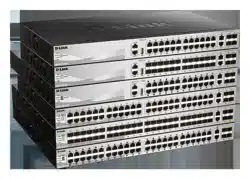Loading ...
Loading ...
Loading ...

DGS-3130 Series Layer 3 Stackable Managed Switch Web UI Reference Guide
124
Parameter Description
Secondary VID Enter the secondary private VLAN ID here. When ticking the Remove
Association option, specifies that this configuration will not be enabled.
Click the Apply button to accept the changes made.
The fields that can be configured for Private VLAN Mapping are described below:
Parameter Description
Unit Select the Switch unit that will be used for this configuration here.
From Port - To Port Select the range of ports that will be used for this configuration here. Select the
Trunk option to specify that the trunk port will be associated with the private
VLAN map.
Primary VID Enter the primary private VLAN ID here.
Action Select Add to add a new entry based in the information entered.
Select Remove to remove an entry based in the information entered.
Secondary VID List Enter the secondary private VLAN ID here. When ticking the Remove Mapping
option, this specifies that this configuration will not be enabled.
Click the Apply button to accept the changes made.
VLAN Tunnel
Dot1q Tunnel
This window is used to display and configure the 802.1Q VLAN tunnel settings.
An 802.1Q tunnel port behaves as a User Network Interface (UNI) port of a service VLAN. The trunk ports which are
tagged members of the service VLAN behave as the Network Node Interface (NNI) ports of the service VLAN.
Only configure the 802.1Q tunneling Ethernet type on ports that are connected to the provider bridge network, which
receives and transmits the service VLAN tagged frames. If the tunnel Ethernet type is configured, the specified value
will be the Tag Protocol ID (TPID) in the outer VLAN tag of the transmitted frames of the port. The specified TPID is
also used to identify the service VLAN tag for the received frame on this port.
To view the following window, click L2 Features > VLAN Tunnel > Dot1q Tunnel, as shown below:
Figure 5-38 Dot1q Tunnel Window
The fields that can be configured are described below:
Loading ...
Loading ...
Loading ...
